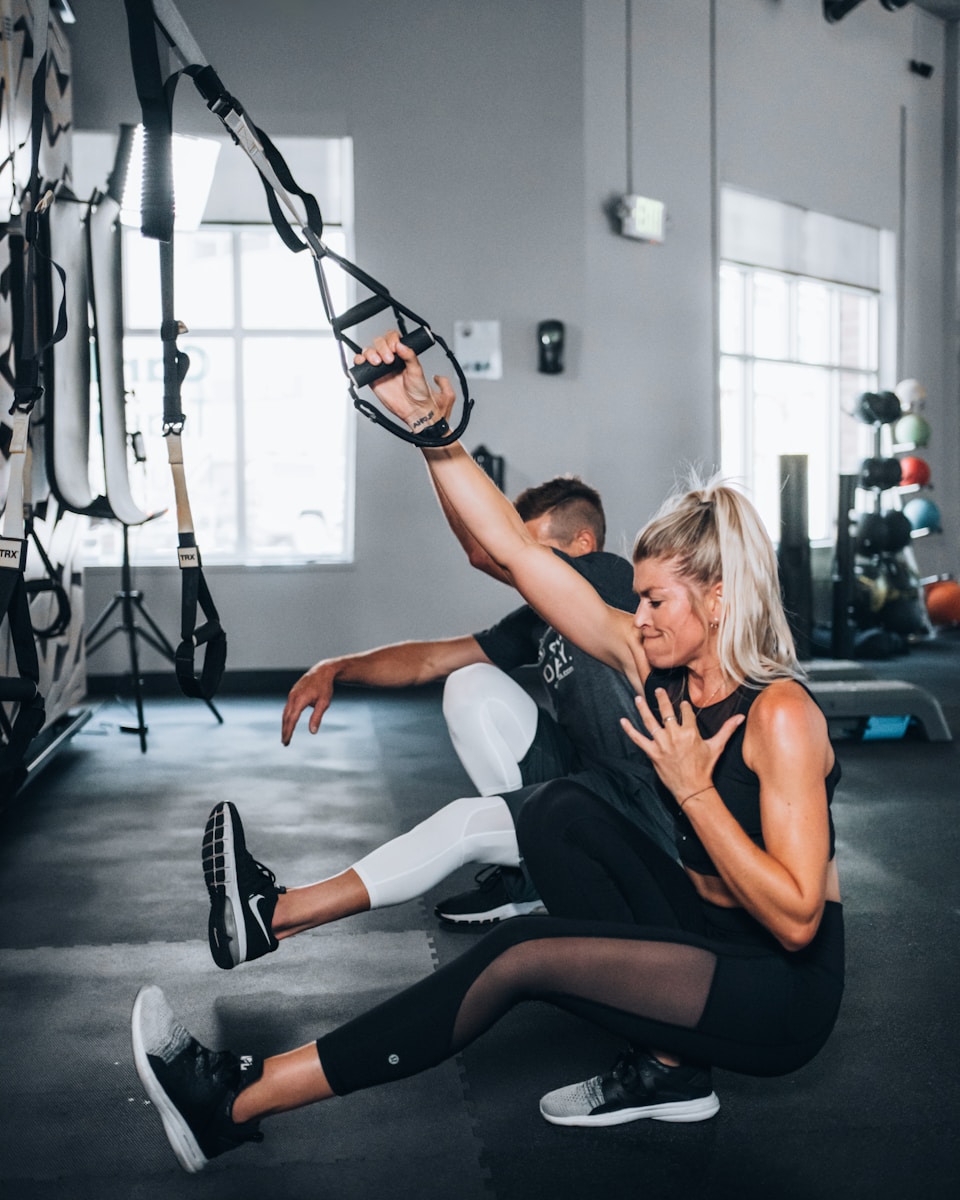Introduction
In the pursuit of overall health and well-being, functional fitness has emerged as a key focus. Unlike traditional exercise routines that may prioritize aesthetics or isolated muscle groups, functional fitness aims to improve our ability to perform everyday tasks with greater ease and efficiency. By incorporating exercises that enhance natural movement patterns, we can achieve better overall strength, flexibility, and coordination.
What is Functional Fitness?
Functional fitness refers to a style of exercise designed to mimic and improve the movements required in daily life. The goal is to develop a well-rounded physical capacity that enhances muscle strength, endurance, balance, and flexibility, thereby making routine activities easier and more efficient.
Benefits of Functional Fitness
- Improved Daily Functionality: Functional fitness exercises are designed to improve the body’s ability to perform everyday tasks, such as lifting, reaching, and bending. This can lead to increased ease and reduced risk of injury during daily activities.
- Enhanced Core Strength: Many functional fitness exercises target the core muscles, which play a critical role in stabilizing the body and maintaining proper posture. A strong core is essential for preventing back pain and improving overall stability.
- Increased Flexibility and Range of Motion: Functional fitness often includes exercises that enhance flexibility and range of motion, which can improve overall mobility and reduce stiffness.
- Better Balance and Coordination: By incorporating exercises that challenge balance and coordination, functional fitness helps improve proprioception and stability, reducing the risk of falls and injuries.
Key Functional Fitness Exercises
1. Squats
Squats are a fundamental functional exercise that targets the lower body muscles, including the quadriceps, hamstrings, and glutes. This movement is essential for everyday activities such as sitting, standing, and climbing stairs.
How to Perform a Proper Squat:
- Stand with feet shoulder-width apart and toes slightly turned out.
- Keep your chest up and core engaged.
- Bend your knees and lower your hips as if sitting back into a chair.
- Ensure your knees track over your toes and do not extend past your toes.
- Lower down until your thighs are parallel to the ground, then push through your heels to return to the starting position.
2. Lunges
Lunges are another effective exercise that targets the lower body and improves balance. They help strengthen the legs and enhance the ability to perform movements such as walking or climbing.
How to Perform a Proper Lunge:
- Start by standing with feet hip-width apart.
- Take a step forward with one foot, lowering your hips until both knees are bent at approximately 90 degrees.
- Ensure that the front knee does not extend past the toes and that the back knee hovers just above the ground.
- Push through the heel of the front foot to return to the starting position, then alternate legs.
3. Push-Ups
Push-ups are a classic upper body exercise that strengthens the chest, shoulders, and triceps. This exercise also engages the core, promoting overall stability.
How to Perform a Proper Push-Up:
- Start in a plank position with hands placed slightly wider than shoulder-width apart.
- Lower your body by bending your elbows until your chest nearly touches the ground.
- Keep your body in a straight line from head to heels throughout the movement.
- Push through your hands to return to the starting position.
4. Planks
Planks are an excellent core-strengthening exercise that also engages the shoulders, back, and legs. This exercise improves core stability and overall body strength.
How to Perform a Proper Plank:
- Begin in a forearm plank position with elbows directly under your shoulders and feet hip-width apart.
- Engage your core and maintain a straight line from head to heels.
- Hold this position for as long as possible while keeping your body steady and avoiding sagging or arching.
5. Deadlifts
Deadlifts are a compound exercise that targets the posterior chain, including the lower back, glutes, and hamstrings. This movement is beneficial for improving posture and overall strength.
How to Perform a Proper Deadlift:
- Stand with feet hip-width apart and a barbell or dumbbells in front of you.
- Bend at the hips and knees, keeping your back flat and chest up.
- Grip the barbell or dumbbells with an overhand grip.
- Lift the weights by extending your hips and knees, keeping the weights close to your body.
- Lower the weights back to the ground with control.
Incorporating Functional Fitness into Your Routine
To maximize the benefits of functional fitness, it’s essential to incorporate a variety of exercises into your routine. Aim to perform a mix of strength training, cardiovascular exercises, and flexibility training to ensure a well-rounded approach.
Sample Functional Fitness Routine:
- Warm-Up: 5-10 minutes of light cardio (e.g., brisk walking or jogging) followed by dynamic stretching.
- Strength Training: Include exercises such as squats, lunges, push-ups, and deadlifts. Perform 3 sets of 10-15 repetitions for each exercise.
- Balance and Stability: Incorporate exercises such as single-leg stands or stability ball exercises to improve balance and core strength.
- Cool Down: 5-10 minutes of static stretching to improve flexibility and promote recovery.
Tips for Success in Functional Fitness
- Consistency is Key: Regularly incorporate functional fitness exercises into your routine to see continuous improvement in your strength, balance, and overall functionality.
- Progress Gradually: Start with lighter weights and simpler exercises, gradually increasing intensity as you build strength and confidence.
- Focus on Form: Proper technique is crucial for preventing injuries and maximizing the effectiveness of your workouts. Consider working with a fitness professional to ensure correct form.
- Listen to Your Body: Pay attention to how your body responds to different exercises and make adjustments as needed. Rest and recovery are important components of any fitness regimen.
Conclusion
Functional fitness offers a comprehensive approach to improving everyday movements by enhancing strength, balance, and flexibility. By incorporating exercises that mimic real-life activities, individuals can achieve better overall functionality and reduce the risk of injury. For additional information and resources on fitness and wellness, visit Unisho, where we explore various aspects of travel, lifestyle, and health.
This content is provided to the best of our knowledge, but there may be changes or updates. Please refer to current fitness guidelines and consult with a fitness professional for personalized advice.

